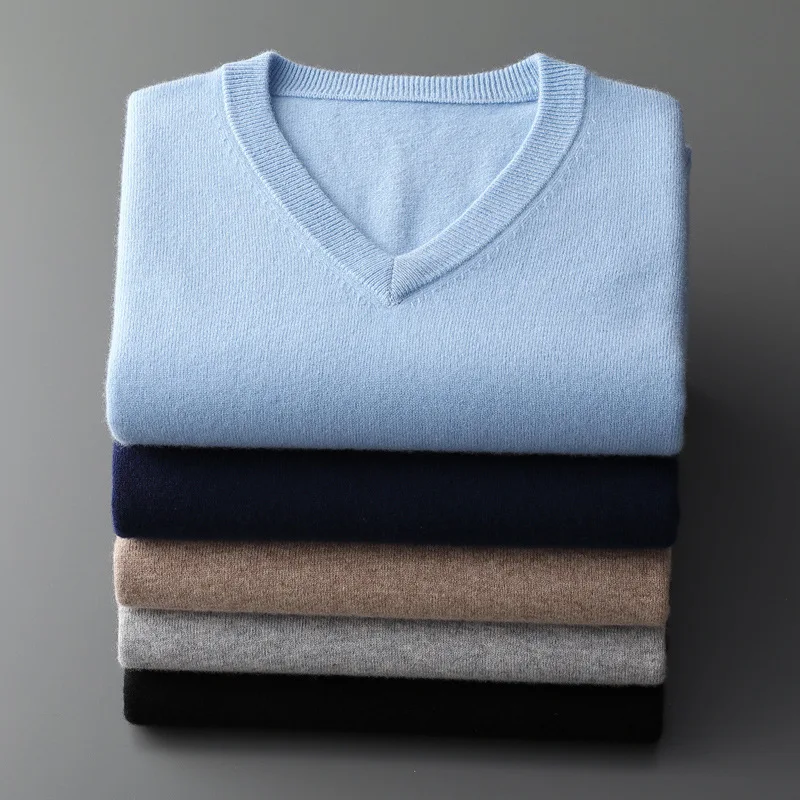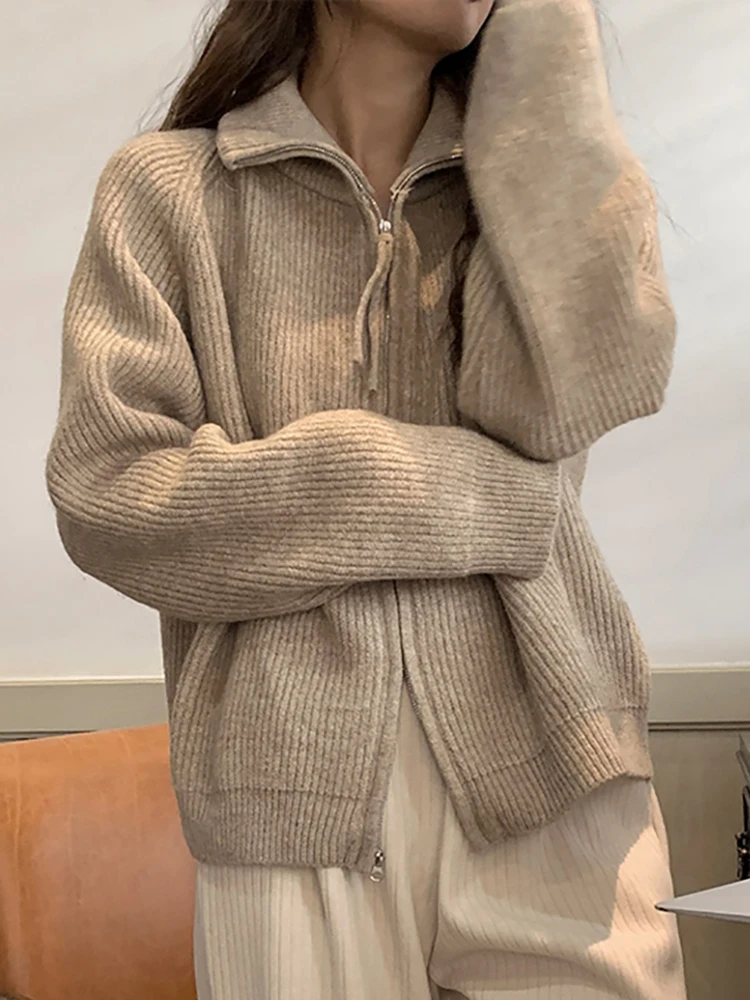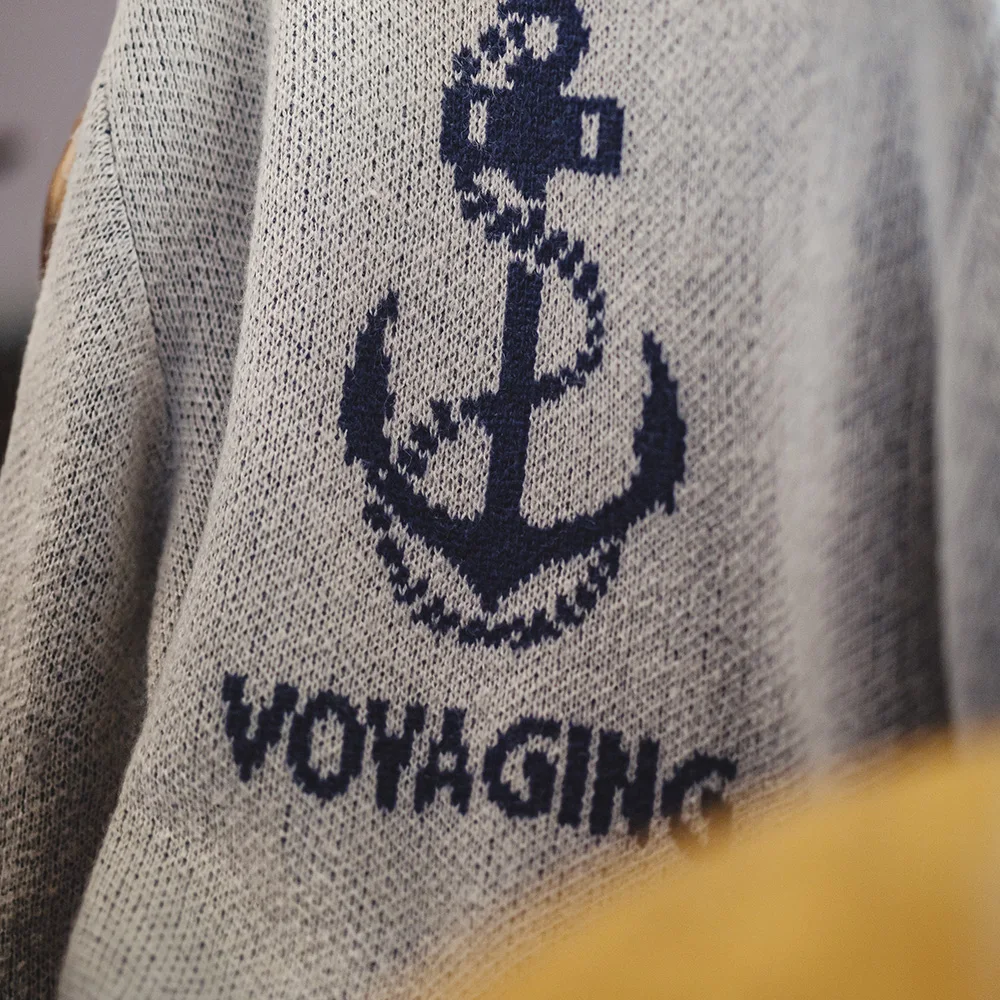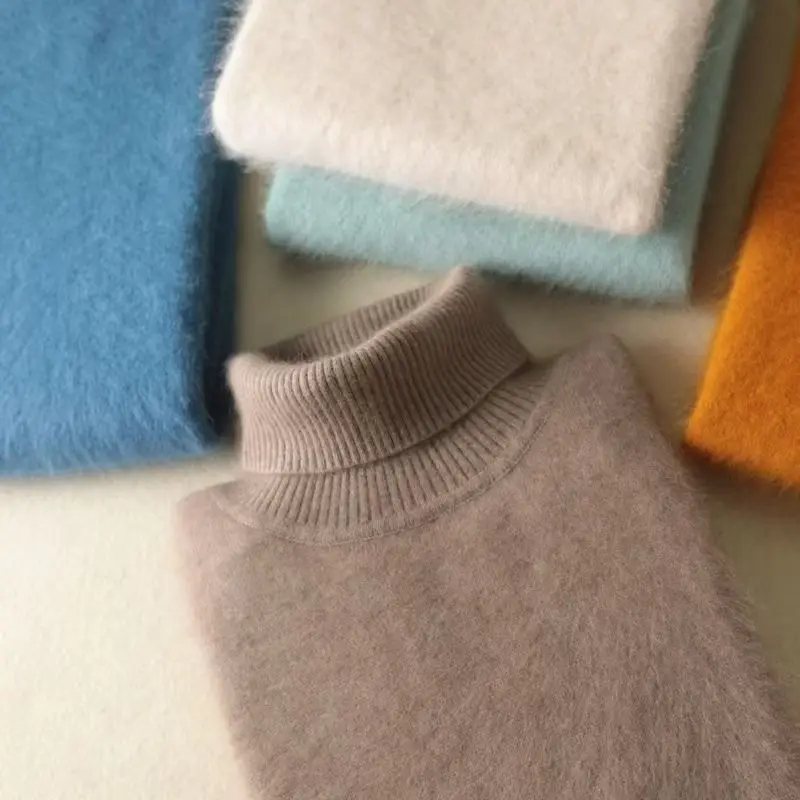Understanding Classic Cashmere: The Pinnacle of Luxury Textiles
Classic cashmere represents the epitome of luxury textiles, defined by its exceptional purity and traditional processing methods. What makes cashmere truly “classic” is not just its origin, but its adherence to stringent quality standards that have been maintained for generations. True classic cashmere consists of pure, high-grade fibers that undergo traditional processing techniques to preserve their natural qualities.
The quality of cashmere is measured by specific technical parameters that distinguish superior fibers from average ones. Premium classic cashmere features fibers exceeding 36mm in length and measuring under 16 microns in thickness – earning the coveted Grade A classification. For perspective, these fibers are remarkably finer than human hair (which averages 50-70 microns) and significantly thinner than regular sheep’s wool (20-40 microns).
The exceptional nature of classic cashmere begins with its harvesting. Traditional methods involve carefully hand-combing the downy undercoat from cashmere goats during their natural molting season, rather than using mechanical or less gentle methods that can compromise fiber integrity. This meticulous collection process yields only 150-200 grams of usable fiber per goat annually, explaining the material’s rarity and prestige.
The relationship between “classic” cashmere and qualities like craftsmanship, purity, and timelessness is inseparable. These fibers have been treasured for centuries precisely because they represent nature’s perfect combination of warmth, lightness, and softness. Understanding these fundamentals helps explain why genuine classic cashmere commands premium pricing and why styling options for cashmere cardigans remain so versatile and enduring.
For those seeking deeper insights into what makes this fabric so special, exploring the definitive guide to classic cashmere fabric reveals the fascinating details behind its enduring appeal.
The Unmatched Comfort of Premium Cashmere
When it comes to comfort, nothing rivals the sensory experience of premium cashmere against the skin. This extraordinary textile offers a combination of tactile qualities that simply cannot be matched by other natural or synthetic fibers:
- Incomparable softness: The ultra-fine diameter of cashmere fibers (under 16 microns) creates a silky smooth texture that feels gentle and luxurious against even the most sensitive skin.
- Lightweight warmth: Despite its delicate feel, cashmere provides remarkable insulation, offering 3-8 times more warmth than regular wool while weighing significantly less.
- Natural breathability: The unique fiber structure allows air circulation, preventing overheating while maintaining consistent warmth.
- Temperature regulation: Classic cashmere adapts to your body temperature, providing warmth in cold weather while remaining comfortable in milder conditions.
- Hypoallergenic properties: The absence of lanolin (the oil found in sheep’s wool that often triggers allergic reactions) makes pure cashmere an excellent choice for those with sensitive skin.
The science behind cashmere’s exceptional comfort lies in its unique fiber structure. Each fiber contains microscopic air pockets that trap body heat while allowing moisture to escape. This natural crimp in the fibers creates tiny insulating air chambers that provide warmth without bulk, explaining why a thin cashmere sweater can keep you warmer than a bulky synthetic alternative.
The tactile experience of wearing pure cashmere goes beyond mere comfort—it creates a sense of everyday luxury that enhances your entire wardrobe. Browse our collection of premium cashmere sweaters to experience this unparalleled comfort for yourself.
Durability That Defies Expectations
Contrary to popular belief, high-quality classic cashmere is not delicate or fragile. This misconception often stems from experiences with inferior cashmere or blends that fail to deliver the resilience of genuine premium fibers. In reality, authentic classic cashmere demonstrates remarkable durability that improves with time.
The secret to cashmere’s longevity lies in its fiber length. Superior cashmere with fibers exceeding 36mm creates stronger, more resilient garments that resist pilling—those small, unsightly balls that form on the fabric surface with wear. While all natural fibers experience some degree of pilling initially, quality cashmere actually improves after these loose fibers are removed, becoming smoother and developing a subtle luster over time.
Longevity Fact: With proper care, high-quality cashmere garments can remain in excellent condition for 10+ years, making them true heirloom pieces that often outlast multiple fast-fashion cycles.
The natural elasticity of premium cashmere fibers allows garments to maintain their shape despite regular wear. This remarkable recovery ability means your favorite cashmere piece will continue to drape beautifully year after year, resisting the sagging and stretching that plague lesser materials.
Perhaps most impressively, classic cashmere becomes softer with each wearing and gentle washing while maintaining its structural integrity. This progressive improvement stands in stark contrast to synthetic materials and even lower-grade wools, which typically deteriorate with use and cleaning.
Many customers wonder whether cashmere cardigans are worth the investment, and the answer lies largely in this exceptional durability. The initial investment in quality cashmere pays dividends over time, making it not just a purchase but a long-term addition to your wardrobe.
The Timeless Elegance Factor

Classic cashmere possesses an inherent elegance that transcends fashion trends and seasonal shifts. Unlike materials that come and go with changing styles, cashmere has maintained its status as a symbol of refined taste for centuries. This enduring appeal stems from its natural beauty and unique physical properties that create an unmistakable visual presence.
The distinctive drape of cashmere creates flattering silhouettes that enhance any body type. The fabric flows with graceful movement while maintaining structure, achieving that perfect balance between relaxed comfort and polished appearance. This natural elegance means cashmere pieces require minimal styling to create a sophisticated look.
What truly sets premium cashmere apart is its subtle luster—not the artificial shine of synthetic materials, but a gentle glow that catches light in a way that signals quality and luxury. This natural luminosity comes from the smooth surface of the long fibers, creating depth and dimension that flat, mass-produced fabrics simply cannot replicate.
The versatility of classic cashmere is perhaps its most practical elegant attribute. The same cashmere sweater can look perfectly appropriate with jeans for a casual gathering, under a blazer for professional settings, or paired with formal wear for elegant evenings. This chameleon-like quality makes it an investment that works across your entire wardrobe. Discovering year-round looks with timeless cashmere reveals how this versatile fabric transitions seamlessly through seasons.
Classic designs complement the natural beauty of cashmere, which is why simple, clean lines and timeless silhouettes dominate collections like our men’s V-neck cashmere sweaters. These enduring styles resist the obsolescence that affects trend-focused garments, ensuring your cashmere investment remains relevant and stylish for years to come.
The Sustainable Choice: Ethical and Environmental Benefits
Choosing classic cashmere represents a sustainable approach to luxury in several important ways:
Reduced consumption through longevity: Quality cashmere garments remain beautiful and functional for years, sometimes decades, dramatically reducing the need for frequent replacements. This longevity directly counters the environmental damage caused by fast fashion’s rapid disposal cycle.
Natural, biodegradable fibers: Unlike synthetic materials that can take hundreds of years to decompose, cashmere is completely biodegradable. At the end of its long useful life, a cashmere garment will return to the earth without leaving microplastics or persistent chemicals behind.
Renewable resource when properly managed: The downy undercoat of cashmere goats regrows naturally each year, making it a renewable resource when harvested through traditional, non-harmful combing methods during the natural molting season.
Reduced chemical processing: Premium cashmere requires minimal chemical treatment compared to synthetic fibers, which depend on petrochemicals and intensive manufacturing processes with significant environmental footprints.
Lower lifetime energy consumption: The superior insulation properties of cashmere often mean lower home heating needs, while its durability eliminates the energy required to produce frequent replacements.
The environmental impact of a single quality cashmere sweater over its lifetime is substantially lower than that of multiple lower-quality garments purchased to replace worn-out fast fashion. This lifecycle advantage makes classic cashmere an environmentally responsible choice despite its higher initial cost.
Responsible harvesting practices are essential to cashmere’s sustainability profile. Traditional hand-combing methods cause no harm to the animals and preserve the quality of the fibers—a win-win approach that respects both nature and craftsmanship. Understanding more about choosing eco-conscious cashmere helps consumers make informed decisions that align with their values.
The Value Proposition: Understanding Your Investment
When considering the price of classic cashmere, it’s essential to understand the factors that contribute to its cost and the long-term value it delivers:
The rarity of true quality cashmere cannot be overstated. Each cashmere goat produces only 150-200 grams of usable down annually—barely enough for one-third of a sweater. This limited yield means multiple animals contribute to creating just one garment, and these goats thrive only in specific harsh climate regions that produce the finest, warmest undercoat.
The journey from raw fiber to finished garment involves numerous labor-intensive processes:
| Production Stage | Time/Effort Required | Impact on Quality |
|---|---|---|
| Hand harvesting | 3-4 weeks seasonal window | Preserves fiber length and strength |
| Sorting and grading | Each fiber assessed individually | Ensures consistent quality |
| Cleaning and processing | Multiple gentle washes | Maintains fiber integrity |
| Spinning and weaving | Slower speeds than synthetic production | Creates stronger, more durable fabric |
| Finishing and quality control | Multiple inspections | Guarantees premium final product |
When analyzed through the lens of cost-per-wear, quality cashmere reveals its true value:
A premium cashmere sweater costing $300 that lasts 10 years with 30 wears per season equals just $1 per wearing. Compare this to a $60 acrylic sweater needing replacement every season, which costs $2 per wearing while delivering inferior comfort and appearance.
The multi-seasonal versatility of cashmere further enhances this value proposition. Unlike materials suitable for only one season, classic cashmere works year-round—providing warmth in winter, breathable comfort during transitional seasons, and even serving as a light layer for cool summer evenings.
Cashmere Wrap Sweaters, Women's Cashmere Pullovers
$75.89 Select options This product has multiple variants. The options may be chosen on the product pageCashmere Cable Knit Sweaters, Women's Cashmere Pullovers
Price range: $111.82 through $112.93 Select options This product has multiple variants. The options may be chosen on the product pageCropped Cashmere Sweaters, Women's Cashmere Pullovers
$155.77 Select options This product has multiple variants. The options may be chosen on the product pageOversized Cashmere Sweaters, Plus Size Cashmere Sweaters, Women's V-Neck Cashmere Sweaters
$136.87 Select options This product has multiple variants. The options may be chosen on the product page- Price range: $108.11 through $130.03 Select options This product has multiple variants. The options may be chosen on the product page
Striped Cashmere Sweaters, Women's Cashmere Pullovers
$139.68 Select options This product has multiple variants. The options may be chosen on the product page
Understanding how to choose high-quality cashmere helps ensure your investment delivers its full potential value. Options like our men’s cashmere turtlenecks represent this perfect balance of initial quality and long-term value.
Essential Care Guide: Preserving Your Cashmere’s Beauty

Proper care is the key to maximizing your cashmere investment. Despite common misconceptions, caring for cashmere is straightforward when you follow these essential guidelines:
Gentle washing approach
* Hand wash using lukewarm water and mild detergent specifically formulated for delicates
* Avoid rubbing, twisting, or wringing the fabric
* Gently press water through the garment without stretchingDrying techniques to maintain shape
* Never hang wet cashmere as it will stretch
* Lay flat on a clean towel and reshape to original dimensions
* Roll in the towel to remove excess moisture
* Air dry away from direct heat or sunlightEffective storage methods
* Always fold rather than hang to prevent stretching
* Store in breathable cotton bags or containers
* Add cedar blocks (not mothballs) to deter pests
* Ensure garments are clean before storing for extended periodsAddressing minor pilling
* Use a specialized cashmere comb or fabric shaver, moving gently in one direction
* Remove pills only when the garment is completely dry and laid flat
* Consider this normal maintenance that actually improves appearance over time
Pro Tip: Brief airing between wearings (24 hours) eliminates the need for frequent washing, as cashmere naturally releases odors and refreshes itself.
Contrary to popular belief, quality cashmere does not require dry cleaning. In fact, the harsh chemicals used in dry cleaning can actually damage the delicate fibers over time. The best way to clean cashmere sweaters often involves simple hand washing techniques that maintain fiber integrity.
For those unsure about which cleaning method is appropriate for their specific garment, understanding the differences between hand washing versus dry cleaning cashmere provides valuable guidance for making the right care decisions.
How to Identify Genuine High-Quality Cashmere
Distinguishing authentic premium cashmere from inferior alternatives requires knowing what to look for before making your purchase:
Tactile Assessment Techniques:
* The Pinch Test: Gently pinch and roll the fabric between your fingers. Quality cashmere springs back quickly rather than remaining creased.
* The Cheek Test: Touch the fabric to your cheek. Genuine fine cashmere feels soft and warm without scratching.
* The Stretch Test: Gently pull the fabric. Superior cashmere has natural elasticity and returns to shape immediately.
Visual Quality Indicators:
* Look for subtle color variations within the fabric, indicating natural, undyed fibers or expert dyeing techniques
* Premium cashmere displays a gentle luster rather than a flat appearance or artificial shine
* Examine the evenness of the knit with no loose threads or irregular stitching
* Check for transparency by holding the fabric to light—quality cashmere has appropriate density
Understanding Technical Specifications:
* Ply: Refers to how many yarns are twisted together (2-ply is standard, 4-ply indicates heavier weight)
* Gauge: Measures knitting density (higher gauge means finer knitting)
* Weight: Quality cashmere has appropriate weight for its intended use—not too light (which indicates less cashmere) or unnecessarily heavy
Red Flags for Inferior Quality:
* Price too good to be true (genuine cashmere has minimum production costs)
* Excessive initial pilling even before wearing
* Rough or itchy feel, indicating shorter fibers
* Labels using terms like “cashmere feel” or listing cashmere last in fiber content
Understanding regional variations in cashmere quality can also inform your purchasing decisions. Different regions produce distinctive characteristics in their fibers, with the finest generally coming from specific inner mountain regions where goats develop particularly fine undercoats. Learning where the world’s best quality cashmere comes from provides valuable context for informed shopping.
A Comparative Analysis: Classic Cashmere vs. Other Luxury Textiles

Understanding how classic cashmere compares to other premium textiles helps justify its position as the ultimate luxury fiber:
| Feature | Classic Cashmere | Merino Wool | Cashmere-Silk Blend | Synthetic “Cashmere-Like” |
|---|---|---|---|---|
| Fiber Diameter | 14-16 microns | 18-24 microns | Variable (depends on blend) | Usually 18+ microns |
| Warmth-to-Weight | Exceptional (3-8x wool) | Good | Very good | Poor to moderate |
| Softness | Extremely soft | Soft | Extremely soft with sheen | Initially soft, deteriorates |
| Durability | Excellent with proper care | Very good | Good but requires careful handling | Poor to moderate |
| Breathability | Excellent | Good | Very good | Poor |
| Pilling Resistance | High (quality grades) | Moderate | Moderate | Low |
| Cost Justification | Longevity, comfort, versatility | Performance, durability | Luxury appearance, drape | Initial price only |
Classic cashmere outperforms merino wool in softness and warmth-to-weight ratio, though merino offers superior water resistance and may be more appropriate for technical outdoor applications. The key difference lies in the diameter of the fibers—cashmere’s finer structure creates its distinctive softness that merino, despite its quality, cannot match.
Cashmere-silk blends offer enhanced drape and subtle sheen while slightly reducing warmth. These blends can be excellent choices for lighter garments or formal wear where the visual appeal of silk adds value. However, they typically require more delicate handling than pure cashmere.
The most significant contrast appears when comparing genuine cashmere to synthetic “cashmere-like” materials. While synthetic options may initially mimic some cashmere characteristics, they quickly reveal their limitations through poor temperature regulation, decreased softness after washing, and rapid deterioration. The price difference between these materials reflects not just brand positioning but fundamental quality differences that become evident with use.
Understanding different processing methods within cashmere categories, such as brushed versus classic cashmere, further refines your ability to choose the right material for specific needs. For versatility between seasons, our cashmere-wool cardigans offer a practical blend that combines the best qualities of both materials.
Frequently Asked Questions About Classic Cashmere
Is cashmere really worth the higher price?
Yes, when considering cost-per-wear and longevity. Quality cashmere lasts for many years, becomes softer over time, and provides unmatched comfort and versatility. The initial investment typically yields lower long-term costs than repeatedly replacing lower-quality garments.
Can classic cashmere be worn year-round?
Absolutely. Cashmere’s exceptional temperature regulation makes it suitable across seasons. It provides warmth in winter while remaining breathable enough for spring and fall. Lighter weight cashmere pieces are even comfortable on cool summer evenings.
How can I tell if my cashmere is high quality?
Quality cashmere feels incredibly soft, has a subtle luster rather than shine, springs back after being pinched, and displays even knitting with appropriate weight for its type. The label should indicate Grade A and specify pure cashmere rather than a blend.
Will all cashmere eventually pill?
All natural fibers can experience some initial pilling, but high-quality cashmere with longer fibers (36mm+) pills significantly less and improves after this initial stage. Extensive or continuing pilling typically indicates lower quality shorter fibers or improper care.
How often should I wash my cashmere?
Much less frequently than other materials. Cashmere naturally resists odors and refreshes with simple airing between wears. Most quality pieces need washing only 2-3 times per season unless visibly soiled.
Does cashmere shrink when washed?
Quality cashmere maintains its dimensions when washed properly (hand washing with appropriate detergent in cool water, laying flat to dry). Shrinkage usually results from improper washing techniques, excessive agitation, or exposure to heat.







